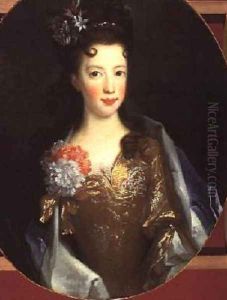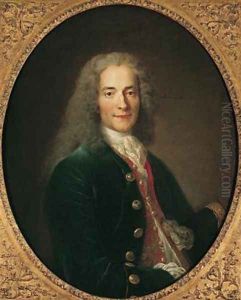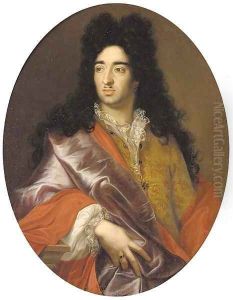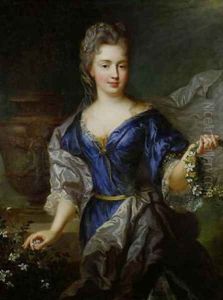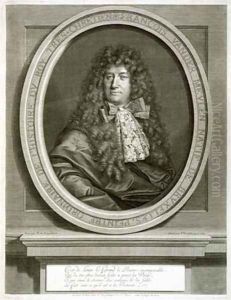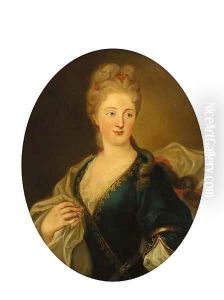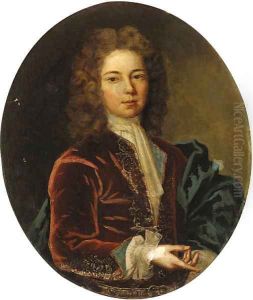Largilliere, Nicholas de Paintings
Nicolas de Largillière was a prominent French painter and portraitist who achieved great success in his time, particularly in the depiction of the French bourgeoisie and aristocracy, as well as the royal family. Born on October 10, 1656, in Paris, he was the son of a merchant. However, his family moved to Antwerp when he was just three years old, and it was there that he began his artistic training.
Largillière showed artistic promise from a young age. He first trained under Antwerp painter Antoine Goubeau at the age of 15 and later worked in London for Peter Lely, who was the principal painter to Charles II. During his time in England, Largillière painted numerous portraits of the English aristocracy. His talent was recognized by the French Academy in London, which admitted him at only 18 years old. However, he moved back to France in 1679 due to the anti-Catholic sentiment in England after the Popish Plot.
In Paris, Largillière quickly established himself as a leading portrait artist. He was received by the Académie Royale de Peinture et de Sculpture in 1686, where he presented a portrait of the painter Charles Le Brun as his reception piece. Largillière's style was influenced by the vibrant colors and grand compositions of Flemish Baroque art, as well as by the elegance and detail of French Classicism.
Throughout his career, Largillière painted numerous public figures, including Louis XIV and members of his court. He was also known for his still-life paintings and religious works, although portraiture remained his primary genre. His portraits are characterized by their rich color palette, detailed textures, and the lively expressions of his subjects.
Nicolas de Largillière's legacy includes a vast number of portraits that provide an insight into the society and fashions of his time. He served as a bridge between the grandiose style of the 17th century and the more intimate and refined portraiture that would develop in the 18th century. He passed away in Paris on March 20, 1746, leaving behind a body of work that continues to be celebrated for its artistic merit and historical significance.
